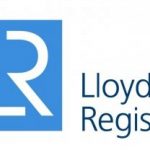A consortium led by Norwegian cleantech company TECO 2030, compatriot shipbuilder Umoe Mandal and maritime engineering company BLOM Maritime is developing a hydrogen-powered high-speed vessel with zero emissions under the “High-speed vessel of the future” project.
Under the project, the county municipalities of Finnmark, Nordland, Trøndelag and Vestland aim to develop groundbreaking technology in several areas and one of them is to develop, build and demonstrate the world’s first hydrogen-powered high-speed vessel.
As described, the contract contains two phases, where the consortia will first develop and get their solutions approved in 2022 and 2023.
In the next phase, one supplier will be chosen to build and demonstrate the newly developed vessel. The vessel will be in pilot operation from 2025.
“By introducing hydrogen as an energy carrier for high-speed vessels, we can create the uncompromising high-speed vessel that can replace all current high-speed vessels in Norway”, says Tomas Norvoll, the county mayor in Nordland.
The consortium of TECO 2030, BLOM Maritime and Umoe Mandal is one of three qualified consortiums and will receive up to 5 million NOK (around $500,889) in funding support to develop the zero-emission vessel.
The vessel will combine fuel cell systems from TECO 2030 and an energy-efficient catamaran design with Surface Effect Ship (SES) technology from Umoe Mandal.
It will be able to transport 200-300 passengers at speeds above 35 knots while sailing over long distances.
TECO 2030 is also a part of the consortium that will develop a hydrogen-powered high-speed vessel for the Port of Narvik.
The boat will be equipped with hydrogen fuel cells from TECO 2030 and will be built by the shipyard Grovfjord Mekaniske Verksted (GMV), which is located near Narvik.
When completed, the boat will replace one of the port’s diesel vessels. As a result, the Port of Narvik will be able to reduce both its diesel consumption and its CO2 emissions significantly.
Source: Offshore Energy





